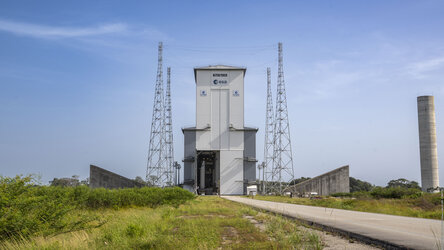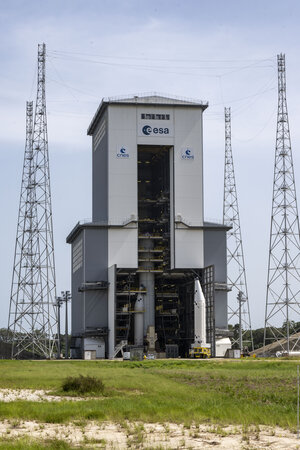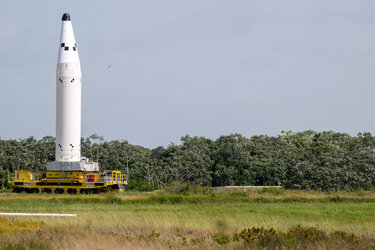Accept all cookies Accept only essential cookies See our Cookie Notice

About ESA
The European Space Agency (ESA) is Europe’s gateway to space. Its mission is to shape the development of Europe’s space capability and ensure that investment in space continues to deliver benefits to the citizens of Europe and the world.
Highlights
ESA - United space in Europe
This is ESA ESA facts Member States & Cooperating States Funding Director General Top management For Member State Delegations European vision European Space Policy ESA & EU Space Councils Responsibility & Sustainability Annual Report Calendar of meetings Corporate newsEstablishments & sites
ESA Headquarters ESA ESTEC ESA ESOC ESA ESRIN ESA EAC ESA ESAC Europe's Spaceport ESA ESEC ESA ECSAT Brussels Office Washington OfficeWorking with ESA
Business with ESA ESA Commercialisation Gateway Law at ESA Careers Cyber resilience at ESA IT at ESA Newsroom Partnerships Merchandising Licence Education Open Space Innovation Platform Integrity and Reporting Administrative Tribunal Health and SafetyMore about ESA
History ESA Historical Archives Exhibitions Publications Art & Culture ESA Merchandise Kids Diversity ESA Brand CentreLatest
Space in Member States
Find out more about space activities in our 23 Member States, and understand how ESA works together with their national agencies, institutions and organisations.
Science & Exploration
Exploring our Solar System and unlocking the secrets of the Universe
Go to topicAstronauts
Missions
Juice Euclid Webb Solar Orbiter BepiColombo Gaia ExoMars Cheops Exoplanet missions More missionsActivities
International Space Station Orion service module Gateway Concordia Caves & Pangaea BenefitsLatest
Space Safety
Protecting life and infrastructure on Earth and in orbit
Go to topicAsteroids
Asteroids and Planetary Defence Asteroid danger explained Flyeye telescope: asteroid detection Hera mission: asteroid deflection Near-Earth Object Coordination CentreSpace junk
About space debris Space debris by the numbers Space Environment Report In space refuelling, refurbishing and removingSafety from space
Clean Space ecodesign Zero Debris Technologies Space for Earth Supporting Sustainable DevelopmentLatest
Applications
Using space to benefit citizens and meet future challenges on Earth
Go to topicObserving the Earth
Observing the Earth Future EO Copernicus Meteorology Space for our climate Satellite missionsCommercialisation
ESA Commercialisation Gateway Open Space Innovation Platform Business Incubation ESA Space SolutionsLatest
Enabling & Support
Making space accessible and developing the technologies for the future
Go to topicBuilding missions
Space Engineering and Technology Test centre Laboratories Concurrent Design Facility Preparing for the future Shaping the Future Discovery and Preparation Advanced Concepts TeamSpace transportation
Space Transportation Ariane Vega Space Rider Future space transportation Boost! Europe's Spaceport Launches from Europe's Spaceport from 2012Latest

First Ariane 6 for launch with boosters
Thank you for liking
You have already liked this page, you can only like it once!
The second of two boosters that will power the Ariane 6 ‘flight model-1’ into orbit this summer was transported on 26 April 2024 from the booster finishing facility at Europe’s Spaceport in Kourou, French Guiana, to the launch zone.
With the two boosters complementing the central core, all the propulsion stages for Europe’s new rocket Ariane 6 are on the launch pad.
Each P120C booster is filled with 142 tonnes of solid rocket fuel, measures 13.5 metres long and is 3.4 metres wide. Without these, Ariane 6 would not leave the ground. Together, the two boosters will provide the majority of the thrust needed to get Europe’s new rocket into space, firing into action for up to 130 seconds, each providing 4500 kN of thrust and getting Europe’s new rocket out to an altitude of about 70 km.
The P120C boosters will fire up seven seconds after the Vulcain 2.1 main stage engine roars into action, getting Ariane 6 off the ground and then, when depleted of fuel, being ejected from the rocket to leave the main stage engine in charge.
The yellow transporter that carries each booster to the launch site is a remarkable vehicle in itself. With 36 aircraft wheels beneath it – two rows of nine wheels on either side – it can carry a mass of up to 250 tonnes (more than a jumbo jet). Because of this symmetry, it can be driven from both sides and can even make crablike movements as it swivels from side to side.
The mobile building surrounding Ariane 6 is a 90-metre-high metallic structure that rolls away on rails once assembly is complete to allow Ariane 6 a clear view of the sky and space. The building has platforms for technicians to further assemble Ariane 6 while also protecting the rocket until it is ready for launch.
Ariane 6 is Europe’s newest rocket. A ‘heavy-lift launch vehicle’, it will be able to carry passengers, large and small, into orbit and across the Solar System. Its launch this summer will ensure Europe’s continued independent access to space.
Ariane 6 will be launched from Europe’s Spaceport in Kourou, French Guiana. It has been designed for all possible futures – at its core is maximum versatility, able to put any satellite or payload into any orbital path. This first flight will see the Ariane 62 configuration launched into orbit. For more massive payloads, the Ariane 64 model can be chosen, with four boosters and double the extra thrust.
-
CREDIT
ESA/ArianeGroup/Arianespace/CNES -
LICENCE
ESA Standard Licence

First Ariane 6 booster at the launch zone

Second booster completes Ariane 6 propulsion stages…

First Ariane 6 booster gets lift to launch zone

Ariane 6 gets its wings















 Germany
Germany
 Austria
Austria
 Belgium
Belgium
 Denmark
Denmark
 Spain
Spain
 Estonia
Estonia
 Finland
Finland
 France
France
 Greece
Greece
 Hungary
Hungary
 Ireland
Ireland
 Italy
Italy
 Luxembourg
Luxembourg
 Norway
Norway
 The Netherlands
The Netherlands
 Poland
Poland
 Portugal
Portugal
 Czechia
Czechia
 Romania
Romania
 United Kingdom
United Kingdom
 Slovenia
Slovenia
 Sweden
Sweden
 Switzerland
Switzerland
























